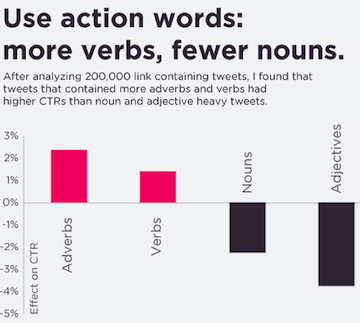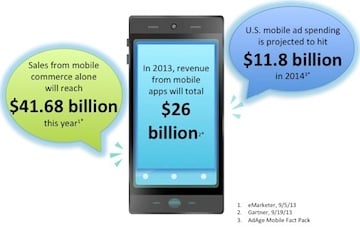6 Must-Read Articles for Your Marketing Team from Q4 2013
The last quarter of the year is a whirlwind for most of us. In the States we have the Thanksgiving holiday, where the entire country hops on a plane (at least it seems that way if you’re at an airport), slips into – then wakes from – a food coma and then invariably gets stuck in various airports en route home (again, this seems more true if you’re (un)lucky enough to be flying). Then it’s back to the office to wrap things up before everyone starts heading off for Christmas and New Years.
Fortunately the best writers of social media, SEO, design, analytics and other articles we marketers love are still cranking out amazing content.
Here we’ve picked our favorite Q4 2013 articles for your marketing team’s reading list. Happy reading!
1. A Scientific Guide to Writing Popular – and Shareable – Headlines for Twitter, Facebook and Your Blog
9.9 marketers out of 10 can’t resist words like “scientific”and “guide” in the title. In this case the author Leo Widrich (the co-founder of Buffer), does not disappoint. Let’s break down his tips by category.
If you love A/B testing like I do, you can try testing different headlines for the same article by tweeting them one hour apart (picking clear “morning”hours such a 9 a.m. and 10 a.m. for example, so you’re not comparing an afternoon tweet and a morning tweet). The limitation here is audience size and your bandwith, so the author also shares a couple of general studies, including those done by Dan Zarella and Twitter:

1) Use more verbs and adverbs and fewer nouns and adjectives; 2) Ask for a download (will result in a click increase of 13% on average); 3) Ask for a retweet (tweets with a retweet “ask”increased retweets by an average of 311%). In addition to these tips, this article also includes a fabulous list of the 20 most retweetable words.
As most of us know, photos get more action (53% more Likes, 104% more comments, and 84% more click throughs, according to Kiss Metrics). Just be sure to post pictures to Facebook that are self-explanatory, that instantly give the viewer a good idea of what the associated link is about. And just as important as what you post is when you post.
The author points to a guide he wrote about the best times to publish your posts. The relevant findings for Facebook include the following: engagement is 18% higher at the end of the week, on Thursdays and Fridays; on the weekends engagement is 32% higher (from a study via Dan Zarella and HubSpot); the best time to post is up for debate, though it’s generally agreed early afternoon is a good time to post (1 p.m. tweets get the most shares, 3 p.m. tweets get the most clicks).
Your Blog
The author started this section by pointing out that you can test the waters for great blog post ideas by tweeting an insight or quote and see if it gets good engagement. As a volunteer abroad programs provider, for example, you could tweet “volunteering abroad is more affordable than ever”and if it gets lots of engagement write a blog post like “5 Ways Volunteering Abroad is More Affordable than Ever.” Later the author looked at a post from Iris Shoor, in which the author analyzed the top 100 blogs on the Web and shared the top 3 tips: use numbers in your post titles (such as “5 Reasons You Should Already be an Au Pair in New Zealand” or “10 Off the Beaten Path Countries to Teach Abroad”); teach people something (people love guides and how-tos, like “How to Find Internships at Start Ups Abroad” or “Practical Guide to International Job Hunting”). Use certain words that makes posts more viral – popular words include “smart,””surprising,””hacks,””science,””huge/big,” or “critical” and “history.”
I know I’ve got my next blog post title: “5 Surprising Yet Critical Science Hacks Every Smart Programs Abroad Marketer in History Should Have Applied to Reach Huge Amounts of Readers and Build Big Audiences.”
2. Are You Using Quora in Your Social Strategy? 8 Tips to Do It Right
You get hundreds of retweets a week, have some of the most popular boards on Pinterest and grow your Facebook fanbase faster than some countries grow their national debt. Take your expertise and share it on Quora.

You’ll get insights into what issues and questions your user base has, which you can then use for future content. Quora will not only give you inspiration for maketing via other channels, but it can be a powerful marketing vehicle in and of itself.
All 8 tips are worth a read, but here are my top picks.
- Answer questions as soon as possible: In general, it’s best to post your response to a question as soon after it’s posted as possible. Since the question will be fresh in the mind of the person who asked it, it’s more likely they’ll engage with your response and give you an upvote. Also, you won’t be in the position where you’ll risk repeating ideas someone already shared. And lastly, “if answers within the same question have the same number of upvotes, the older answers tend to stay closer to the top,”meaning your response will be more likely to be seen by more readers.
- Know Who’s Viewing You: visit Your personal views page to see the stats on how readers are getting to your answers. They could be finding your content through tagged topics, via your profile or random browsing. In the example the author used, she looked at her personal views page and noticed that most of her answers were viewed “Via Social Media Marketing,”so going forward she could tag relevant answers with the social media marketing topic or focus on answering more questions in that topic.
- Use Images: As with most marketing, well-chosen images can be a powerful tool on Quora. Using an image will help your response stand out from the rest. Some users actually create unique images for their Quora posts. The author shares a great example of the effective use of images by one Quora user, .
3. 15 Psychological Triggers to Convert Leads into Customers
Regardless of whether your clients are college students embarking on a semester abroad, families volunteering together in Latin America or high school students’ parents looking for the perfect gap year program for their kids, you’re going to want to make sure you know and understand the psychological triggers that convert your leads into paying customers. The author doesn’t uncover any new triggers most of us have never heard about, but he does do a good job of running through points we should all keep in mind, including actionable takeaways and examples. I’ve picked a couple of my favorites.

- What is Hot off the Press?: We humans react to what is top of mind, and often in this day and age what’s top of mind is what’s in the news, whether it’s a significant historical event, a novelty or an event (natural or created by man) that directly touches hundreds of thousands of lives. In this article, the example used is Oreo commemorating the Mars Rover landing and the anniversary of the moon landing with an image that included two open faced Oreo cookies: one with the creme filling dyed red, featuring Mars Rover marks and the other with an image of a “footprint”in the filling.
In the context of programs abroad, I might create some marketing content for a volunteer program in Brazil along the lines of “There’s more to Brazil than World Cup”or “Brazil: come for World Cup, stay for our orphanage soccer camp.”If there’s a huge cold spell in the U.S. making news with record low temperatures, you can market to study abroad students with something along the lines of the following: “Escape another freeeezing winter! Check out our awesome programs in Oz, and spend next winter soaking up the warm Australian sunshine.”
- Build Controversy: When done well, this trigger can lead to tons of engagement. As an example, the author points to HelpScout which featured a popular article titled “Why Steve Jobs Never Listened to His Customers.” At Go Overseas, our CEO used this method, challenging the beliefs of our audience in his very popular post (4,873 Facebook Likes) Teaching Abroad Will Ruin Your Life. If your organization offers internships/volunteer opportunities/teach programs in China, you might want to write a post titled “5 Reasons to NEVER Intern/Volunteer/Teach in China.”Just be sure keep a good balance and always keep it tactful, since too much controversy can offend and actually turns people away.
4. Bye Bye JavaScript! Auto Event Tracking with Google Tag Manager
Marketers ’round the world rejoiced when they read this post by Justin Cutroni, the Analytics Advocate at Google. With Auto Event Tracking, marketers can track almost any user action with using any additional JavaScript. This means that it automatically captures if a student visiting your study abroad site clicks on a certain program or a site visitor submits a form to learn more about your teach abroad program. How does this magic work? Thanks to three new pieces of functionality: the Event Listener tag, new automatically-generated events that indicate a user has completed an action and the new macros that collect info about users’ interactions.
![]()
The Event Listener tag “listens” for 4 types of actions, which it then automatically pushes as a Google Tag Manager event: 1) Click listener (including link clicks, button clicks, image clicks, etc., which when they occur automatically generate the Google Tag Manager event gtm.click) 2) Form listener (the Google Tag Manager event gtm.formSubmit is automatically generated when any form submission occurs) 3) Link click listener (same idea as the click listener, except that it only captures clicks on links, creating the GTM event gtm.linkClick automatically when a link is clicked) 4) Time listener (collects data at some regular interval that you can set and fires a GTM event at that frequency).
New macros are another key component of the new auto event tracking. As you know, a macro is a snippet of data you can use in your tags. There are 5 new macros that provide elements information: Element url (what this macro does is store the value of the “href”attribute or “action”of the element triggering the event, so you see essentially the URL of the link clicked); Element id (this macro is the value of the “id”attribute, which comes after the URL that follows the “href” but before the closing bracket, as in this example: Analytics….the value by the way is stored in the data layer in the gtm.elementID variable); Element target (this macros stores the value of – wouldn’t you know it – the “target” attribute of the element and its value is stored in the gtm.elementTarget variable within the data layer); Element classes (this is the value of the class attribute of the element that triggered the event and is stored in the data layer in the gtm.elementClasses variable); Element (the macros that is also the value of the “href” attribute or “action” of the event-triggering element.
Beyond understanding the ins and outs of event tracking, the author walks through setting up the tracking for user clicks, tracking outbound links, tracking file downloads and tracking form submissions.
5. Mobile Trends By The Numbers
Even my grandma knows that mobile marketing is big. But just what are the stats? As a marketer, you should know! This article does a great job of sharing a good mix of tips and stats. Take a look at a few of these fascinating stats:

- Nearly half of web consumers worldwide are using mobile devices as their primary method for surfing the internet.
- Projections point to U.S. mobile ad spending hitting the $11.8 billion dollar mark in 2014.
- By 2017, the amount of retail purchases on smartphones in terms of total sales revenue is predicted to more than double, from $14.59 billion to $30.66 billion.
- Revenue attributable to mobile apps was up nearly 70%(to $26 billion) in 2013 compared to $18 billion in 2012.
6. 16 Free Tools That Make Content Creation Way Easier
What? Tools that will make content creation waaaay easier? Yes please!! Sometimes these lists can be disappointing, but this one has some great gems. Take a look at all of them but here are a few of my favorites.
- Skitch: Mark up images, PDFs and digital assets with arrows, text, callout boxes and more. It’s free, but you will be required to open an Evernote account (also free and a great organizational tool for all those great marketing articles you come across).

- Word2CleanHTML: Ever noticed when you’re writing up drafts for your blog post in programs like Google Drive or Microsoft Word, when you try to move the content from one program to another you get strange things like huge paragraph breaks or none at all, missing font stylizing and text that won’t stop turning really big and bold when you delete the line before it? Paste your draft into this site, and you’ll get a nice HTML version that you can then paste elsewhere and it will generate nice clean copy. Voila!
- Google Fonts: With this tool you can browse hundreds of free, open-source fonts that are optimized for the web.
- Canva: Unleash your inner designer and start creating fun design assets using Canva’s library of assets and templates that you can manipulate to your little heart’s content. You can also add your own imagery.
- HubSpot’s Free Stock Photos: Finding great stock images can be a challenge/pain in the bum/huge time sucking vortex. HubSpot offers a set of 160 free stock photos that you can download after filling out a standard HubSpot download form.
- Infogram: If you’re looking to create an infographic, then this is one tool you’ll want to check out. It’s compatible with Microsoft Excel (yea!) and the infographics are responsive with mobile and tablet screens, so your mobile visitors won’t feel left out.
There were so many great marketing articles in Q4 of 2013, but these are the ones that caught our attention. Are there any outstanding articles you think we should add to our list? Leave a comment and let us know!
Source: Go Overseas




